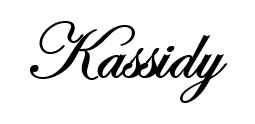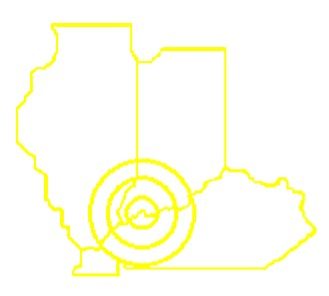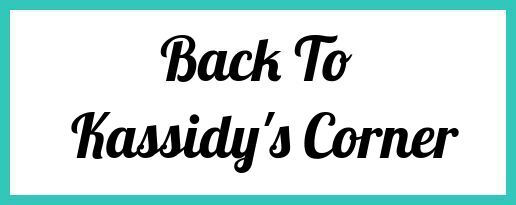
Is making sure historical and genealogical information in your family history factual important? Absolutely! But researching is just one aspect of crafting a family history or an ancestor’s biography–there’s also the writing to consider. Throughout this post, we’ll explore various ways that you can make your family history truly shine!


Yes, I said it–writing can be easy! If you find the idea of writing daunting, it’s likely because you’re afraid you’ll have misplaced punctuation or misspelled words, but the good news is that both of these mistakes can be avoided. If you’re typing up your family history in Word Document or Google Docs, chances are any incorrect words will be corrected or at least highlighted for you to correct. This means you don’t have to be the world’s best speller to create a biography that’s stellar! If you have doubts on how to spell a word, grab a dictionary or search online to find the correct spelling. Now let’s look at another part of writing that can give people pause–punctuation.


Punctuation is vital for creating a professional and understandable family history! Let’s look at a few punctuation rules:
Use a comma before and, but, or, for, and yet if they’re joining two independent (complete) sentences. Here’s an example:
My grandfather was a Civil War veteran, and he was politician in the 1800s.
Since “My grandfather was a Civil War veteran” is a complete, understandable sentence and “he was a politician in the 1800s” is, too, you’ll need to place a comma before the word “and.”
You’ll also need to use commas to separate items in a list of three or more things. Here’s an example:
My grandmother was an activist, teacher, and housewife.
Using commas to separate these words makes the sentence understandable and also sets each item apart.
If you reference a month and year (like August 1911), you won’t use a comma. However, you will use commas for full days and years. Here’s an example:
The Battle of Shiloh was fought April 6 and 7, 1862, in Tennessee.
Because I listed the month, day, and year, I used commas. However, if I’d said the Battle of Shiloh was fought April 1862, no comma would have been used.
When quoting information, keep punctuation marks inside of the quotes. This is probably one of the most common grammar mistakes, but luckily it’s an easy one to correct. Here’s an example of what to do in this instance:
Historians note how “Buell’s success turned the tides of the war.”
You absolutely should not have written this sentence as follows: “Buell’s success turned the tides of war”. As a general rule, punctuation should go within the quotes–think of the quotation mark as a little “hug” for your piece of punctuation. BONUS TIP: Let’s say you’re quoting where a historical author is writing about a Civil War soldier’s letter. You’ll need to put quotes around quoted information, which would look like this:
Historian Kassidy Cobb writes how “Jerome Sears’s mention of ‘prayer meetings in camp’ sheds light on the impact of Christianity during the American Civil War.”


To create a good biography, you’ll want to start with the basic details. This information would be your ancestor’s name, their parents’ names, birth date, and birthplace. After you have those details down, it’s time to list where they lived in early censuses, their siblings, their occupation, when they married, their kids, and so forth.
If your ancestor served in the military, be sure to include information about their time in service, as well. Here, you would also have the chance to supplement information with any other sources you find important. For example, if I was writing about my Revolutionary War ancestor who fought at the Battle of Germantown, I could include a bit of pertinent information about the battle.
You’ll also want to include what happened to your ancestor. If they were in a war, did they survive? When did they pass away, and where? What was the cause of death? Where are they buried? All of this information will enhance your family history. But as you think about writing a good family history or biography, there’s something you can’t overlook…writing in chronological order!


You’ll always want to arrange information chronologically by year. If you cite multiple pieces of information from the same year, always arrange information by month and day. Here’s an example:
My grandfather was born August 22, 1825. He enlisted in the Civil War October 20, 1861, and was mustered in on December 9, 1861. He passed away April 8, 1863.
In the above example, I go in chronological order because my grandfather’s birth in 1825 precedes his enlistment in 1861. Although I have two mentions of 1861, I listed October first because it comes before December. Of course, my grandfather’s death date is listed last. Chronological order can be easy if you think about it like this: my ancestor had to be born before he could enlist. And since he died in the war, he had to enlist before he could pass away. Of course, you can also remember it by just recognizing what years come first.


For starters, you can keep your family history or ancestor’s biography interesting simply by avoiding jargon (that’s fancy words/lingo). Although sounding scholarly can be tempting, scholarly writing is often harder to read and limits your audience. As a general rule, it’s best to be professional but conversational.
You can also keep your work interesting by expanding on ideas, diseases, or military terms that may be era-specific. In most cases, you should assume that your reader has limited historical knowledge, which is why it’s always best to briefly expand on ideas. For example, if you mention Civil War knapsacks, you can make a quick note that they’re basically “the nineteenth century version of a backpack.”
You can also use quotes to enhance your work! I especially like quoting information that comes directly from primary sources. So if I’m writing a biography and have that person’s letters or diaries in my collection, I like to include a bit of their own words and thoughts. But quoting documents brings me to my next point–citing information.


I won’t lie and say that citing sources if fun–it’s actually a lot of extra work. But at the same time, it’s incredibly important! Without citing your sources, you may find it difficult to rediscover information you used in your biography. What’s more, other readers may find that your works lacks credibility without cited sources.
Most historians use Turabian formatting, where footnotes are present on every page that uses quoted text. That said, Turabian formatting is incredibly detailed and specific, which means the general public may find it difficult to adapt to. If you’re not writing for a scholarly work (i.e., a professional magazine, journal article, book, etc.), I would suggest not worrying about citing in proper format. For the use of you, your family, or your friends, I would create a simple bibliography at the end of your work with only the basic information. For a website, I would list the article name and a link (i.e., “Fort Defiance: A Confederate, Union, & USCT Heritage,” https://www.westerntheatercivilwar.com/post/fort-defiance-a-confederate-union-usct-heritage). For a book, I would simply include the author’s name and the book’s title (i.e., Steven E. Woodworth, This Great Struggle: America’s Civil War). In the end, citing your sources–even if they aren’t Turabian correct–is most important!


Being creative in history does not mean falsifying information. Do NOT create incorrect narratives about your ancestor for the sake of a “good story.” Instead, use your creativity to present history in different formats. Not everyone enjoys reading, so if you don’t want to create a standard biography, consider using PowerPoint, videos, or other mediums to share your family’s story. (Hint: Canva and Adobe Express are incredible free resources that allow you to create visually pleasing and professional videos!) Ultimately, history isn’t boring, so it’s our jobs as genealogists and historians to present information in a way that’s accurate and interesting!


Ultimately, you should do your best when it comes to writing, and don’t stress–let writing be fun! Don’t be afraid to have your work proofread by a family member or friend before sharing it with others. Also, consider reading it yourself several times, checking for any mistakes or portions of text that could be reworded for clarity. My biggest tip? Reading aloud often helps you catch mistakes you may otherwise overlook!
I trust that by following the tips I’ve provided, you’ll be able to create a family history or biography that will disseminate important and fascinating information…for generations to come.
Keep the History Alive!



